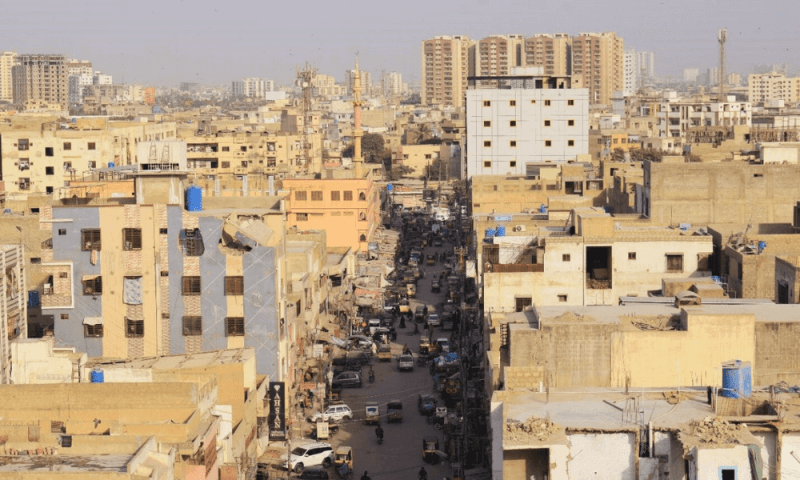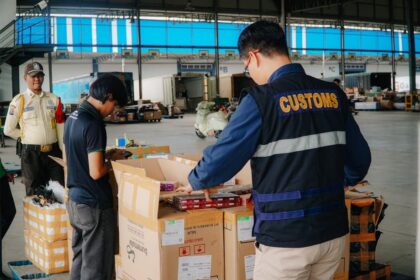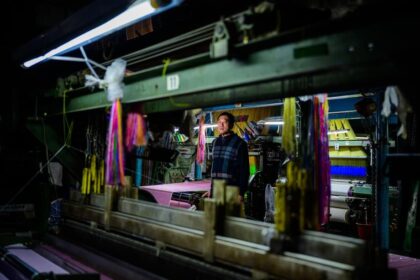The Changing Face of Karachi’s Neighborhoods
Karachi, Pakistan’s largest metropolis and economic powerhouse, is undergoing a profound transformation. Once characterized by vibrant, close-knit communities and open streets where children played freely, many of the city’s neighborhoods now feel suffocated by the relentless pressure of unregulated housing densification. As the city’s population swells and affordable housing becomes increasingly scarce, families are forced to adapt in ways that are reshaping the urban landscape—often with troubling consequences for safety, infrastructure, and quality of life.
In areas like Paposh Nagar, Delhi Colony, Lyari, and Punjab Colony, the signs of this transformation are everywhere. Streets that once bustled with life are now too cramped to walk comfortably. Water barely reaches household taps, and the sense of community that once defined these neighborhoods is fading. The story of Karachi’s urban squeeze is not just about buildings and infrastructure—it is about the daily struggles of millions of residents seeking dignity, security, and a place to call home.
Why Is Densification Happening?
The roots of Karachi’s housing crisis lie in a complex web of rapid urbanization, population growth, economic hardship, and weak urban planning. According to the latest census, the city’s population is growing at nearly 3% annually, with an overwhelming 68% of residents falling into the low-income bracket and another 22% in the middle-income tier. The demand for affordable housing far outstrips supply, pushing property prices beyond the reach of most families.
As a result, families that once aspired to nuclear living arrangements are now merging back into joint households. The average household size in Pakistan stands at 6.4 members, and 55% of households are multi-generational, according to a 2019 United Nations report. For many, the only way to cope with rising costs and shrinking space is to add floors to existing homes, subdivide plots, or extend buildings informally—often without regulatory oversight or regard for safety standards.
Economic Pressures and Informal Solutions
Low household incomes, high construction costs, and limited access to formal credit have forced families to improvise. Many rely on personal savings or informal loans to finance home expansions. Inheritance disputes are sometimes resolved by selling plots to builders, who then construct multi-storey buildings and sell off individual floors to nuclear families. In Delhi Colony, for example, plots originally measuring 120 square yards have been subdivided into 40 square yard sections, later developed into multi-storey units with narrow staircases and compact bathrooms.
These adaptations may provide short-term relief, but they also contribute to overcrowding, overstretched resources, and a steady decline in living conditions. The pursuit of affordable housing is riddled with soaring property prices, shrinking living spaces, poor construction quality, and widespread bribes to authorities for infrastructure access and unauthorized additions.
The Impact on Infrastructure and Services
As more families squeeze into the same plots of land, the strain on Karachi’s already fragile infrastructure intensifies. Utility connections for electricity, gas, and water are often extended without penalty, even as the number of housing units multiplies. Authorities typically base approvals on the covered area of a plot rather than the number of families living there, allowing builders to add floors with minimal scrutiny.
This regulatory gap has serious consequences. In many cases, the capacity of water and sewerage pipelines remains unchanged, even as the number of residents increases fourfold or more. Access to safe drinking water has emerged as the most urgent concern, with many households relying on shared wells or contaminated sources. Poor drainage systems lead to frequent flooding and waterborne diseases, while electricity and gas supplies are often unreliable due to overloading and frequent load-shedding.
Overcrowding and Declining Quality of Life
On plots initially intended to house a single family of six, there are now often four or more families living in vertically expanded buildings. This dramatic increase in occupancy places immense pressure on essential services and contributes to the daily struggles of residents. Streets have become narrower, open spaces have disappeared, and the sense of community has eroded as families retreat into cramped, isolated living quarters.
In many cities around the world, property and infrastructure taxes are calculated based on the number of families occupying a property. However, in Karachi’s densely populated residential neighborhoods, the lack of such regulation is creating serious challenges in maintaining consistent access to basic services.
Safety Risks and Construction Quality
Perhaps the most alarming consequence of unregulated densification is the decline in construction quality and the growing risk of structural failure. Numerous incidents of collapsing walls, roofs, and entire buildings have been reported in settlements across the city. In September 2024, the wall of an adjacent building collapsed onto the temporary roof of a neighboring plot in Paposh Nagar, killing one person. In another case from August 2024, the roof of a 60-square-yard plot in Lyari collapsed after heavy rain, resulting in two deaths and five injuries.
These tragedies are not isolated incidents. Focus group discussions with local communities reveal that many property owners lack awareness of structural safety, with sentiments like, “It’s good as long as it’s standing” or “…at least it’s our shelter.” For low-income families, the immediate need for shelter often overshadows concerns about long-term safety and structural integrity.
Exploitation and Weak Regulation
Contractors and masons, aware of owners’ limited knowledge and tight budgets, often cut corners for profit. Regulators typically intervene only when buildings become visibly oversized, by which time much of the construction—often rushed and without proper curing—has already compromised safety. Arif Patel, Chairman of the All Nazimabad Builders and Developers Association, acknowledges the problem:
“Any building with three or more floors, approved by the SCBA, must undergo regular inspections and comply with all safety regulations. On paper, the responsibility is acknowledged. However, in practice, these inspections are often poorly conducted, and construction quality frequently falls short of required standards.”
Structural instability is a primary concern in poorly constructed buildings. Observers often see buildings swaying vertically, indicating misalignment or structural tilt. Upon closer inspection, flaws become even more alarming: minimal reinforcement, low-grade steel bars, inadequate horizontal ties, and concrete with a higher proportion of sand than certified. Many structures begin as low-rise buildings, but additional storeys are added without reinforcing the foundation, risking long-term stability.
The Broader Context: Urban Planning and Policy Failures
Karachi’s housing crisis is not simply the result of individual choices or economic hardship—it is a symptom of deeper failures in urban planning, governance, and policy. Many Pakistani cities, including Karachi, lack comprehensive master plans, leading to haphazard development and inadequate infrastructure. Land disputes, unclear property rights, and corruption further hinder proper housing development.
While Pakistan has building codes, enforcement is weak, especially in informal settlements and peri-urban areas. Non-compliance results in structurally unsafe buildings, as highlighted by the devastation caused by the 2005 Kashmir earthquake and the 2022 floods. Government initiatives like the Naya Pakistan Housing Programme aim to provide quality housing, but implementation challenges persist, and many schemes fail to target the poorest segments of the population.
Socio-Cultural and Economic Determinants
Housing quality in Karachi is closely tied to household income, access to credit, and socio-cultural norms. Extended families living together increase space constraints, leading to overcrowding. Cultural norms sometimes prioritize large family compounds over individual privacy, affecting housing design and comfort. Women-headed households face additional challenges in securing housing due to limited property rights and financial independence.
Climate change adds another layer of risk. Karachi is prone to earthquakes, floods, and extreme heat, which can damage poorly constructed homes. Climate-resilient housing remains rare due to cost barriers and lack of awareness, though innovations like compressed earth blocks, bamboo housing, and solar-powered homes offer sustainable alternatives.
Possible Solutions and the Path Forward
Addressing Karachi’s housing crisis requires a multi-faceted approach that goes beyond short-term fixes. Urban planners and experts like Arif Hasan emphasize the need for comprehensive urban planning, investment in infrastructure, and policies that promote equitable access to housing. Sustainable solutions must consider the socio-economic diversity of the population and integrate community participation to ensure long-term success and resilience.
- Economic Interventions: Expand affordable housing finance, subsidize construction materials for low-income groups, and support microfinance initiatives.
- Policy Reforms: Strengthen building codes, streamline land ownership processes, and enhance urban planning to prevent haphazard development.
- Infrastructure Development: Invest in water, sanitation, and energy access, particularly in informal settlements.
- Climate Adaptation: Promote disaster-resistant construction techniques and climate-resilient housing.
- Community Participation: Involve residents in slum-upgrading projects and ensure that solutions are tailored to local needs.
Upgrading slums through in-situ development, as seen in the Orangi Pilot Project, has shown promise but requires scaling up. Improved public transport networks could also alleviate some pressure on urban housing markets by making it easier for low-income workers to live in distant, underdeveloped areas with lower housing costs.
In Summary
- Karachi’s rapid population growth and lack of affordable housing have led to unregulated densification, especially in low- and middle-income neighborhoods.
- Families are coping by adding floors, subdividing plots, and extending homes informally, often at the expense of safety and quality of life.
- Overcrowding, poor construction quality, and weak regulatory oversight have resulted in frequent building collapses and mounting pressure on infrastructure.
- The crisis is rooted in economic hardship, weak urban planning, and policy failures, with government initiatives struggling to meet the needs of the poorest residents.
- Comprehensive solutions require economic interventions, policy reforms, infrastructure investment, climate adaptation, and community participation.
- Without intentional reform and inclusive planning, Karachi’s underserved communities will continue to bear the cost of a system that has long ignored their needs.












